Arachnida-Spiders and Scorpions
| Araneidae Argiope trifasciata Forsskal Banded Argiope | Colorado Insects of Interest Fact Sheet (pdf) | 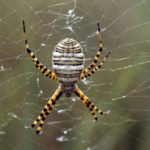 Photo by Whitney Cranshaw. |
| Araneidae Araneus gemmoides Chamberlin and Ivie Cat-faced Spider (Western Plains Orb-weaver) | Colorado Insects of Interest Fact Sheet (pdf) | 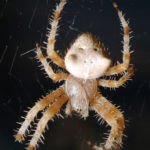 Photo by Whitney Cranshaw. |
| Daddylonglegs (Harvestmen, Opilionids) | Colorado Insects of Interest Fact Sheet (pdf) | 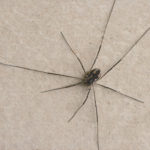 Photo by Whitney Cranshaw. |
| Funnel Weaver Spider (Funnel-web weavers, Grass spiders) | Colorado Insects of Interest Fact Sheet (pdf) | 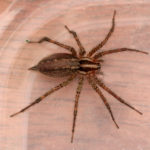 Photo by Whitney Cranshaw. |
| Jumping Spiders | Colorado Insects of Interest Fact Sheet (pdf) | 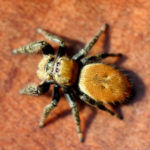 Photo by Whitney Cranshaw. |
| Pseudoscorpions | Colorado Insects of Interest Fact Sheet (pdf) | 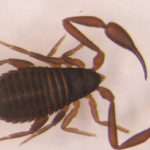 Photo by Whitney Cranshaw. |
| Dysderidae Dysdera crocata Drury Roly-poly Killer Woodlouse Hunter | This smooth bodied spider is perhaps best distinguished by its large fangs which it uses to feed on pillbugs (roly-polies) and other hard-bodied prey. When full grown they are about .5 inch in length. Dysdera have a generally creamy gray body with distinctly reddish legs and cephalothorax. They live in a silk retreat and hunt at night. Their bite can be painful but they are not aggressive and their venom is not known to cause medical problems. Colorado Insects of Interest Fact Sheet (pdf) | 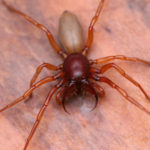 Photo by Whitney Cranshaw. |
| Scorpions | Colorado Insects of Interest Fact Sheet (pdf) | 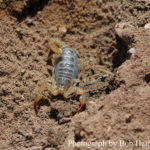 Photo by Bob Hammon. |
| Theraphosidae Aphonopelma spp. Taranchulas | Colorado Insects of Interest Fact Sheet (pdf) | 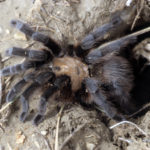 Photo by Whitney Cranshaw. |
| Lycosidae Wolf Spiders | These spiders are sometimes mistaken for Nursery Web spiders. These spiders are good hunters often chasing their pray over a short distance. The female lays an egg sac then attaches it to the underside of her abdomen to protect it. Once the eggs hatch the new spiderlings are carried around on the females back | 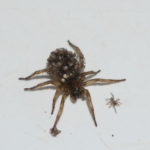 Photo by Bob Hammon. |
| Eutichuridae Cheiracanthium inclusum (Hentz), C. mildei C.L. Koch Yellow-legged Sac Spider | Colorado Insects of Interest Fact Sheet (pdf) | 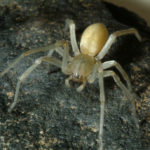 Photo by Whitney Cranshaw. |


